sifu
starting to shine!

Member since September 2010
Posts: 35
|
Post by sifu on Apr 10, 2020 11:42:45 GMT -5
Here is the problem: 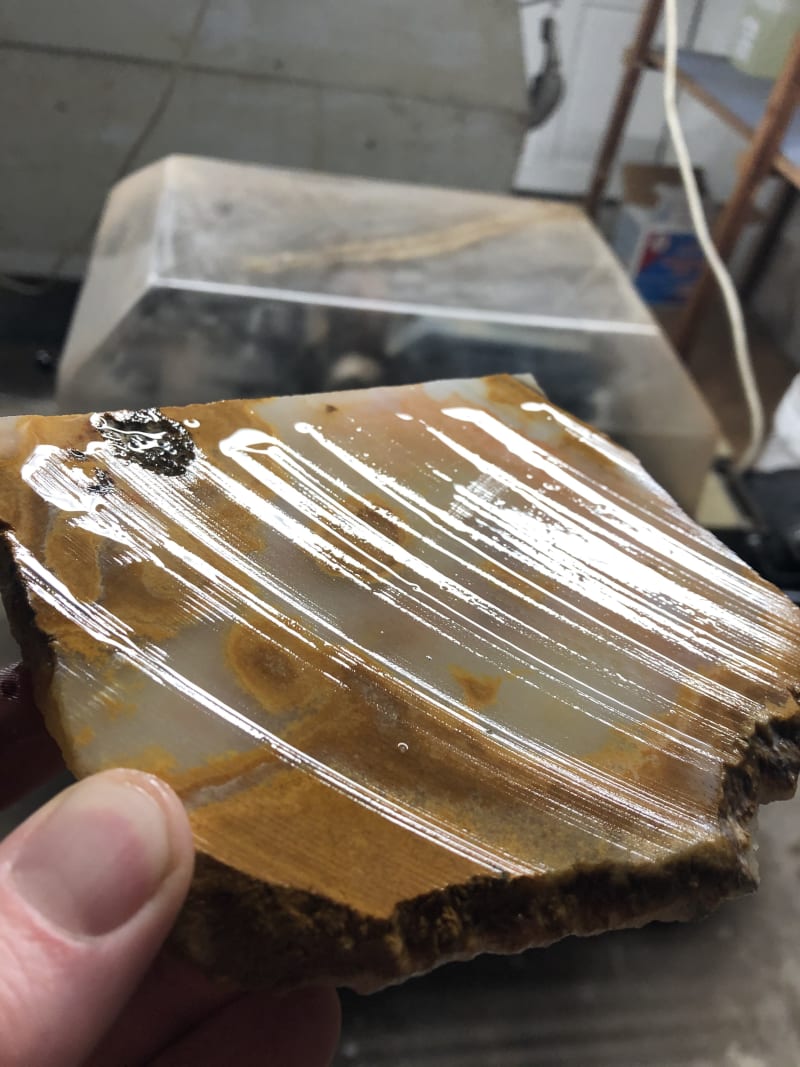 I have not made many cuts since purchasing this saw. I bought it before I knew much about saws or blades, and I suspect the blade was near end of life when I bought it. The carriage is solid, and adjusted for no play. The clutch mechanism is great. But I get bad lapping on cuts. Here are some blade photos: 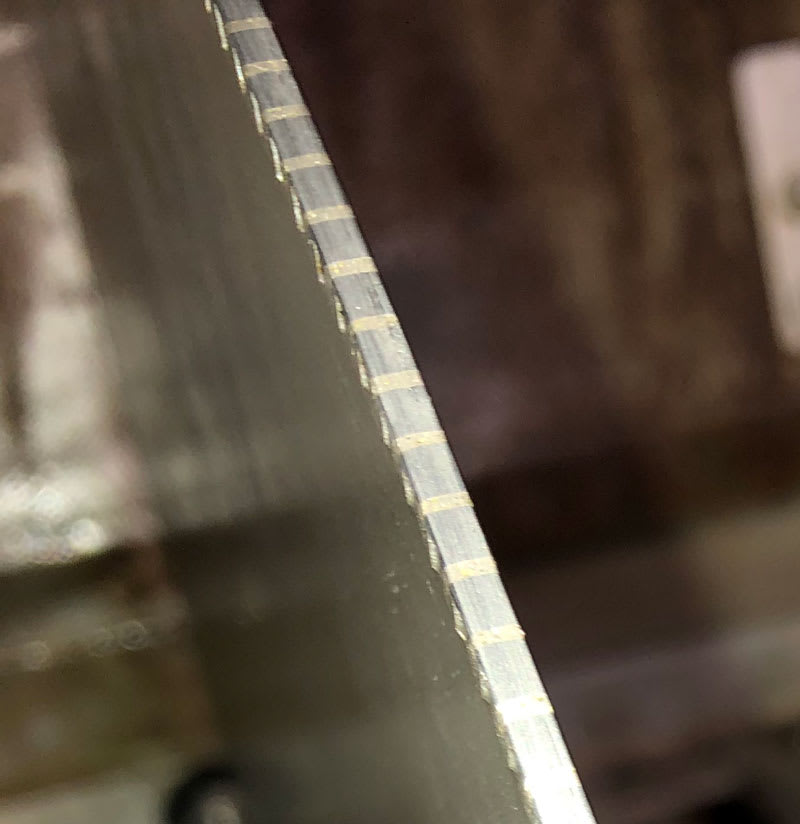 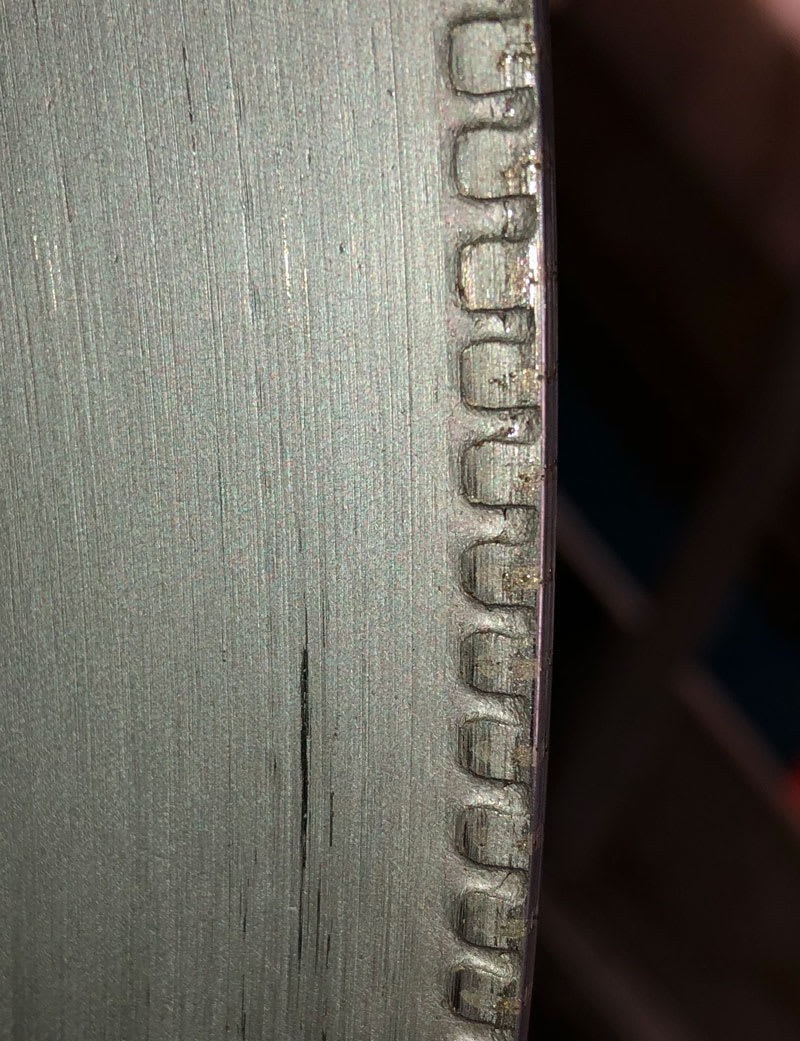 Those of you with more experience: does this blade look exhausted to you? Would really appreciate any insight before dropping half a grand on a new blade. I've tried dressing it, still laps. |
|
|
|
Post by greig on Apr 10, 2020 12:03:00 GMT -5
i am not experienced enough to look at a blade to know. However, when my blades stop slicing rock like butter, I cut into an old brick. That cleans them up fast. I still kick myself for throwing away blades before learning this hack. However, the scores on your rock look awful, so there might be another problem. I will watch this tread with interest. Good luck!
|
|
zarguy
fully equipped rock polisher
   Cedar City, Utah - rockhound heaven!
Cedar City, Utah - rockhound heaven!
Member since December 2005
Posts: 1,791
|
Post by zarguy on Apr 10, 2020 12:10:36 GMT -5
Your blade looks like it has plenty of diamond left.
The ripples on the slab look like there is some side-to-side play somewhere, probably in the carriage or vise.
Even though you say the carriage is solid, I think it could be the culprit.
Lynn
|
|
wpotterw
spending too much on rocks
 
Member since September 2016
Posts: 446 
|
Post by wpotterw on Apr 10, 2020 15:13:13 GMT -5
Here is the problem:  I have not made many cuts since purchasing this saw. I bought it before I knew much about saws or blades, and I suspect the blade was near end of life when I bought it. The carriage is solid, and adjusted for no play. The clutch mechanism is great. But I get bad lapping on cuts. Here are some blade photos:   Adjust clutch, maybe? Those of you with more experience: does this blade look exhausted to you? Would really appreciate any insight before dropping half a grand on a new blade. I've tried dressing it, still laps. |
|
|
|
Post by mohs on Apr 10, 2020 16:31:30 GMT -5
I don’t know much about diamond blades
do know quite lot about wood carbide cutting blades
That scoring look like a side tooth is high
Kerf on a tooth or 2 --is our of whack
Not true in alignment to the others
That a common problem with carbide blades
Not sure it it applies here
But it does look like you have some knobby (kerf) teeth
Does that scoring only occur on one side?
|
|
|
|
Post by Peruano on Apr 10, 2020 18:13:32 GMT -5
There are a myriad of factors to consider in explaining the scoring of your slabs. Reviewing your recent posts you mention a new to you 24" saw. Is this the problem child? A big saw blade is much more likely to be tweaked out of alignment than a smaller blade. Have you removed the blade and laid it on a truly flat surface to see if it is bent or dished. Have you tried the saw on a really soft rock. A dull blade will fight the feed on a hard rock, but push through without surges on a softer one. Can you slow down the feed? Does the rock remain in contact with the blade surface after it passes the cutting edge? If you had an alternative blade available, I'd try it even if it was a smaller one (just add more lubricant). Vice alignment by its self is probably not your problem. Are the threads of the feed screw and or the split nut or its analogue in good shape?
|
|
sifu
starting to shine!

Member since September 2010
Posts: 35
|
Post by sifu on Apr 10, 2020 20:32:41 GMT -5
Thanks for the feedback! Okay, did some troubleshooting today and this post is the image-intensive result. For reference, the saw itself is a 24" saw and vise has the word "Spartan" on it. Somewhere online, someone advertised a 20" "Enan Spartan" in Minnesota that looked extremely similar to my saw, but I can find no other reference. There were some "Spartan"-named saws made down in Bandon or Coos Bay many decades ago, but most of those Spartan saws are pretty funky affairs - no covers! But who knows, mine could have been made by the same company. 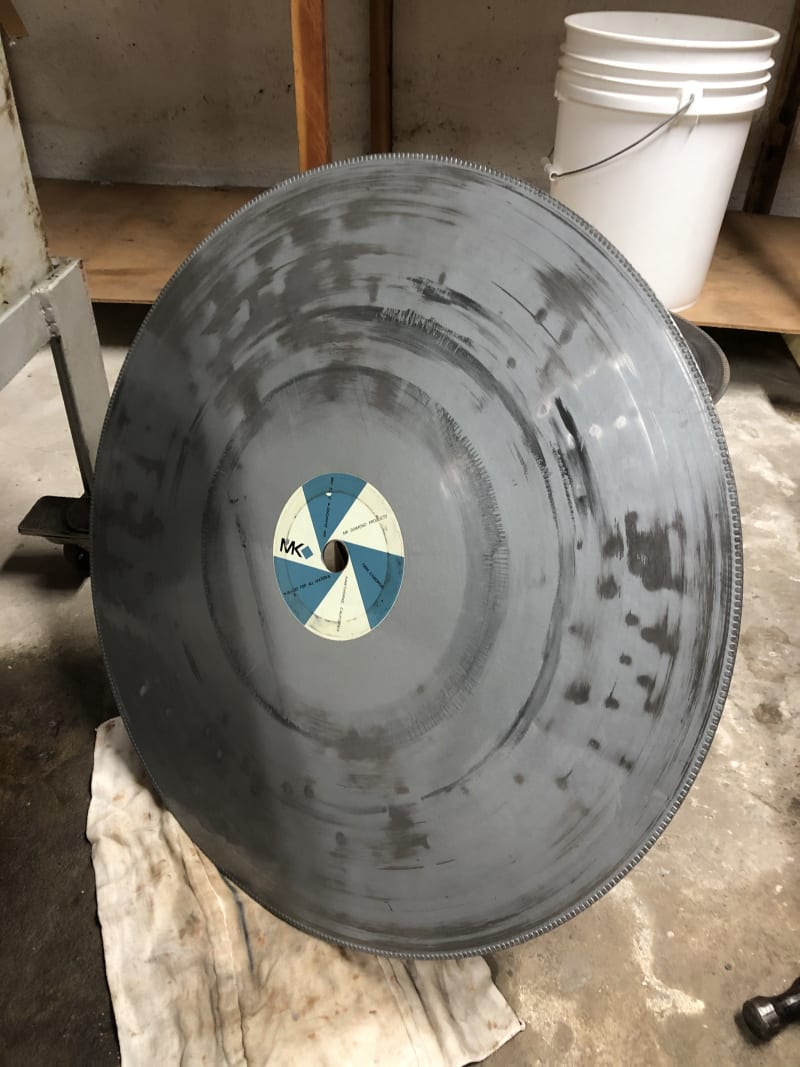 This is the blade in question. Here is what I did: 1. Checked all dimensions. The blade is flat, impressively so for its age. The distance from the vise/carriage to the blade is uniform at all points and as it travels, down to the exact millimeter. There is no play in the carriage or vise. I tightened everything up 2. I dressed the blade with a cinder block. 3. I removed the blade and swedged it, then reversed it. 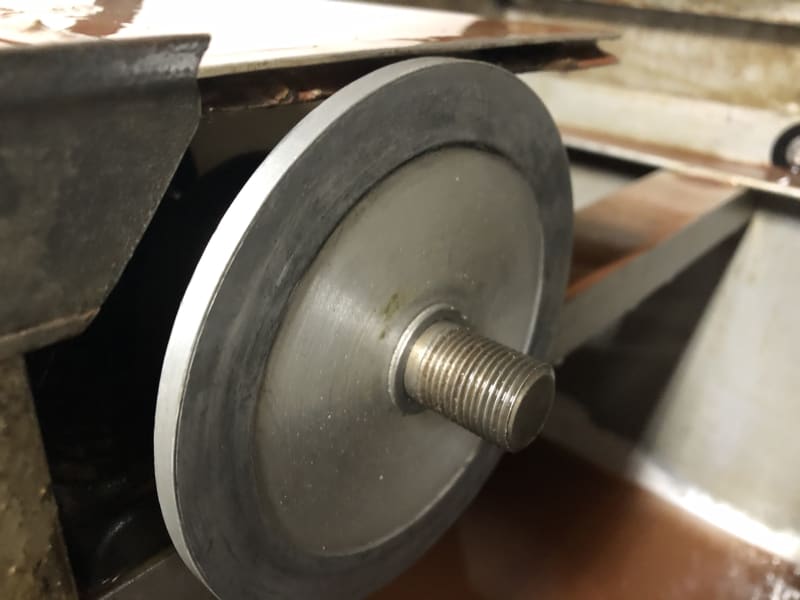 You can see there is a tiny little bushing/washer there on the arbor. With another saw, I had an issue where the blade was coming off the bushing, which definitely caused all kinds of trouble. But the flanges on this saw are not dished - they butt right up to the blade all the way down (including the bushing). 4. I dressed the blade again and made a cut.  As you can see, still badly lapped. Also, the stone was not sitting right up the blade post-cut. 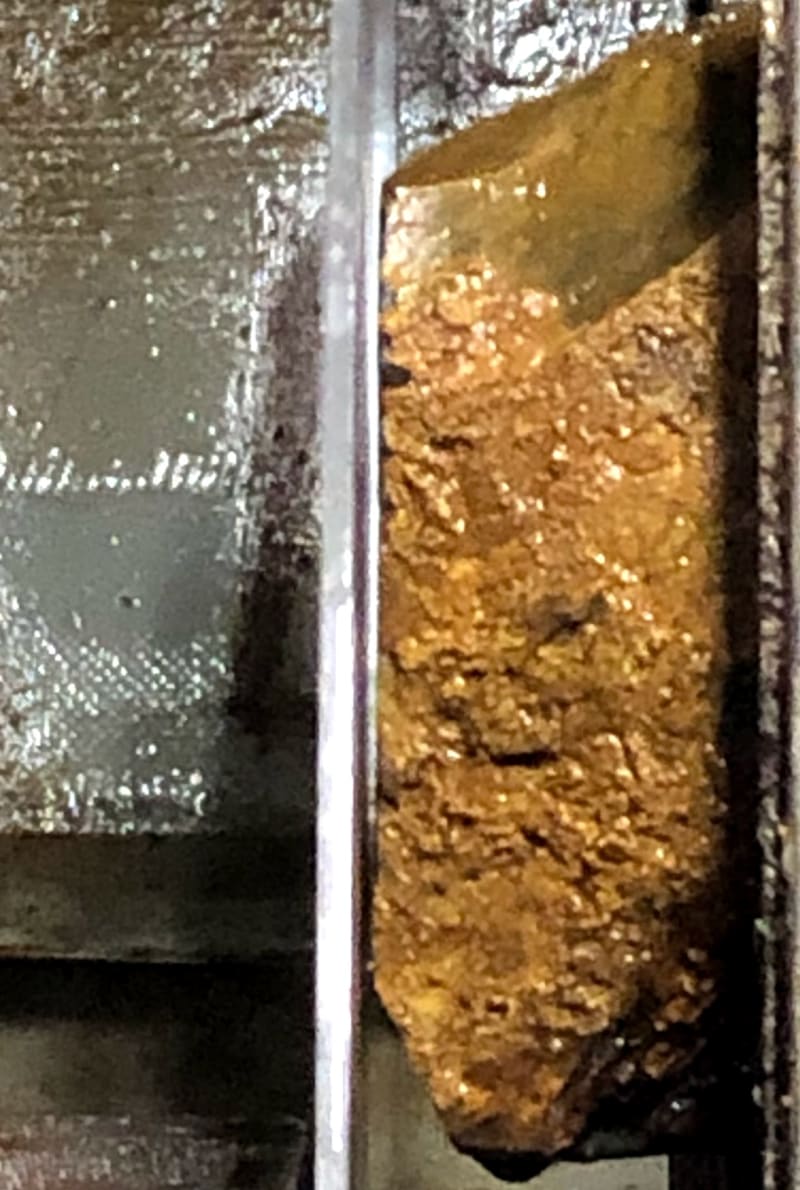 I was not initially concerned about this, and just took the photo for reference. The kerf on my newish 303 blade on another saw is wide enough that the stone doesn't fit snug against the blade post-cut, so I wasn't sure if this was a problem here or not. 5. At this point, I thought maybe the pressure of the hard material against the blade was causing the clutch to slip. Here is the clutch: 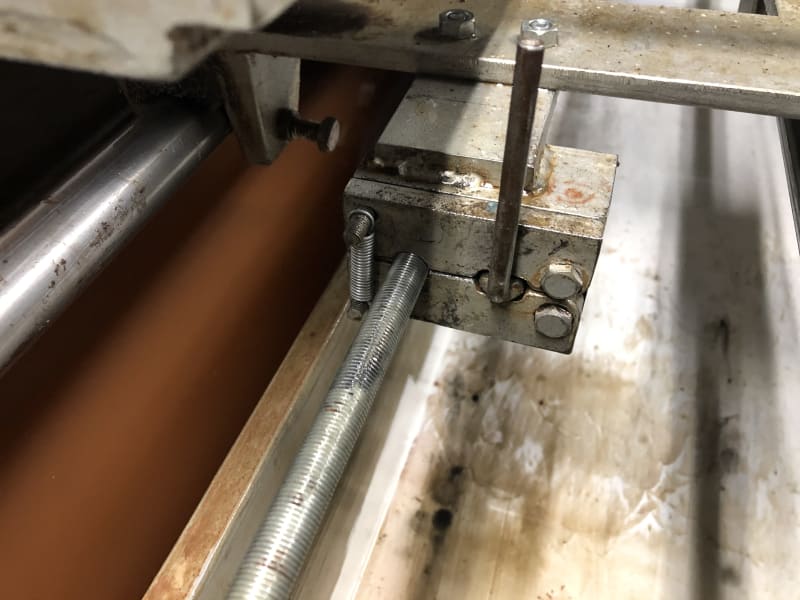 Maybe that spring wasn't tight enough? So I clamped it down: 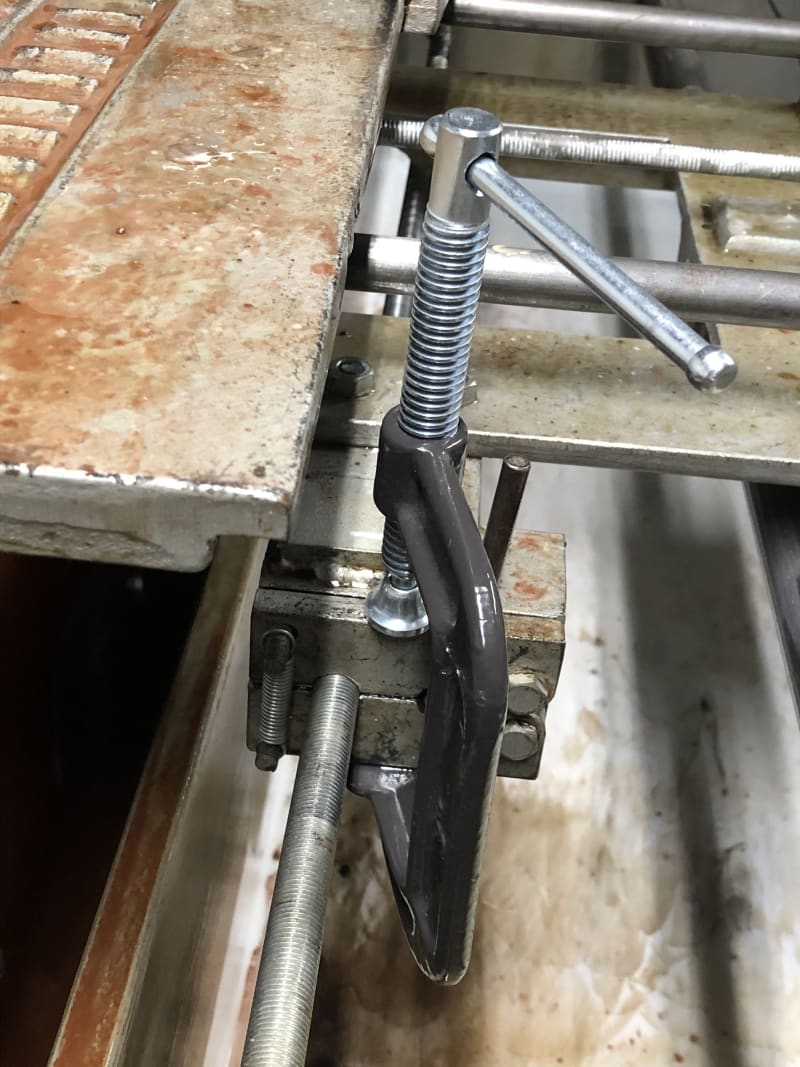 And made another cut:  Success at last! It isn't an optical finish or anything, but pretty smooth. I also noticed, after this cut, that the agate was flush with the blade post-cut. What I probably need is a much stronger/tighter spring on that clutch lock. The feed rate on the carriage is about 10 minutes per inch. I don't know the RPM or SFPM because the motor is ancient. It's big and there are no markings on it. I suspect the feed rate and SFPM are just fine, as this saw came from the estate of an old time rockhound down in southern Oregon. It was like going to Richardson's Rock Ranch, but private, and actually better as there was a lifetime of his self-collected materials from all over the American West. This was a few years back. I wish I'd known more at the time, as I would have bought a ton of material. While there, I saw plenty of big stones that he had cut with this saw though. UPDATE: While the clamp was useful for troubleshooting, it will not be any kind of long (or even short) term solution. Clamping just slightly too much puts a death grip on the screw, which would likely burn out the motor. I'll have to see if I can source a good replacement spring soon. |
|
|
|
Post by rmf on Apr 11, 2020 10:09:53 GMT -5
If your saw is a Spartan Mfg. saw it was made in ID by a guy that worked for Lortone in a previous life. The power drive for the screw motor is from W.W. Grainger. Once you get the correct motor you have to reverse the armature to get it to work in the direction intended. These have the best vice I have seen on a saw.
|
|
|
|
Post by Peruano on Apr 11, 2020 14:18:38 GMT -5
Yep. You are getting close to solving or reducing your problem. The marks are being produced by your stone surging against or pausing against the spinning blade. The split nut analogue is skipping on certain threads or at random times as the work is fed into the blade. Most of the standard remediations are worth considering. Tap the threads; reduce the face of the opposite halves so they can go closer together (producing better thread contact) or whatever it takes. I'm assuming your vice slides smoothly (no binding). That's a big enough blade that you want to use it as long as possible.
|
|
sifu
starting to shine!

Member since September 2010
Posts: 35
|
Post by sifu on Apr 11, 2020 20:01:08 GMT -5
Yep, carriage slides smoothly. RMF, probably is the same make of Spartan: (the carriage/vise assembly is really, really solid) 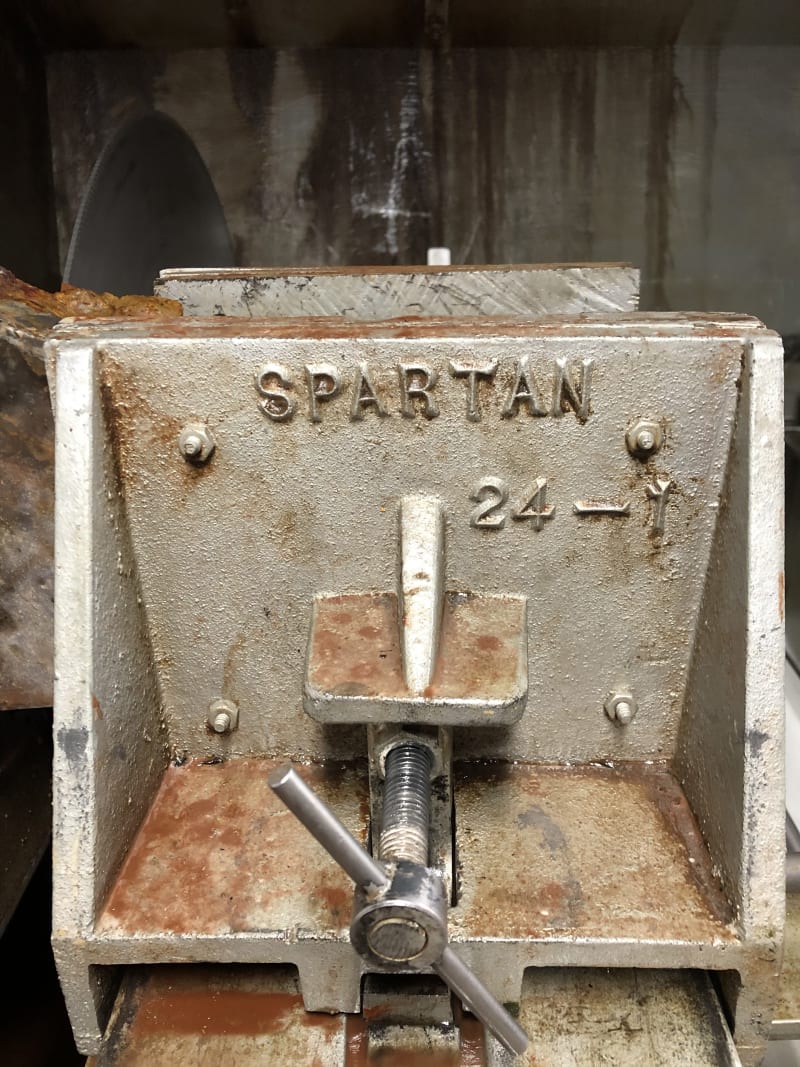 |
|